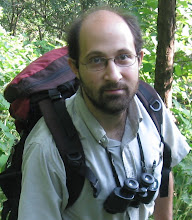I am in the blistering hot construction site that is India's capital. Today's paper reports yesterday's high at the nearby International Airport as 45 Celsius, which is approximately one bijillion degrees Fahrenheit. And even more so than when I was here last summer, everything here is under construction. The chief reason is the construction of Delhi's rapidly growing Metro system, which according to last week's New York Times, is emerging as one of the world's best urban public transportation systems. It is slated to be completed this fall, prior to the Commonwealth Games in October, and if it is, it will be a remarkable accomplishment, doubling the size of the network that is functioning today, and connecting the distant airport and suburbs into the urban core. Compared to our aging east coast subway systems, the Metro is a breeze - fast, clean, efficient, well air-conditioned, and not even all that crowded. And way cheaper - it costs me about 40 cents to take a train from where I'm staying, at the north campus of Delhi University, to where the line currently ends, in central New Delhi. An autorickshaw ride over an equivalent distance might cost four times as much, and take four times as long.
Even aside from the Metro, Delhi is under construction, with streets and sidewalks being dug up for repaving, apparently as an additional beautification effort prior to the Commonwealth Games. With the weather so hot, and the rains still a month or more away, everything is dry, and dust swirls everywhere. In the morning, crews of street sweepers sweep the dust that has settled on the street back up into the air, where it hangs as a dense, unbreatheable fog, before settling again. The leaves of all the trees are coated with dust. I'm wearing a dust mask, and I'm still congested, but somehow life goes on for the 20 million people who live here. I need air conditioning, and sweat profusely while sitting in the breezy shade in the back of the cycle rickshaw. The rickshaw-wallah, meanwhile, barely breaks a sweat while he cycles the km from the Institute of Economic Growth, where I am staying, to the Metro station.
Today my big errand was to register at the Foreigners Regional Registration Office. This formality is required of all foreigners staying in India on visas longer than 6 months, and of all Afghani nationals, regardless of the length of stay. Apparently, the Indian government feels that it is important to insure that any foreigner staying in India for an extended period of time be familiar with long lines and arbitrary bureaucratic procedures. The foreigners in the office came from all over the world. I met people in line from Korea, UK, Congo, and Uzbekistan. As I proceeded through the various lines (I had to speak to 4 different officials to get registered), each one became progressively friendlier and more helpful, until the last one handed me back my passport and registration card, and asked me where I was going to stay when I went to Nagpur, which was where she grew up. The whole process took about 3 hours, which was only slightly longer than it took to check my bags and go through the security line at Newark International Airport a few days ago. I guess India isn't the only place with long lines.
My next task is getting a mobile phone number. Since terrorists use mobile phones, there is now a complicated registration procedure required to purchase a sim card. I think it is now more difficult to get a mobile phone connected in India than it is to purchase a sub-machine gun in the United States.
In the morning, the Koel, an Indian relative of the European cuckoo, wakes me with its ringing song from the Cassia fistula trees, now nearly leafless and covered in a profusion of yellow flowers. Rose-ringed parakeets scream across the sky. As the sun sets, throngs of people fill the streets, buying mangoes and saris and mobile phones.
No pictures yet...
Tuesday, May 18, 2010
Subscribe to:
Post Comments (Atom)

No comments:
Post a Comment